Fly Fishing | How to fly fish in 2025?
By Adam Hawthorne | Last Modified: April 28, 2025
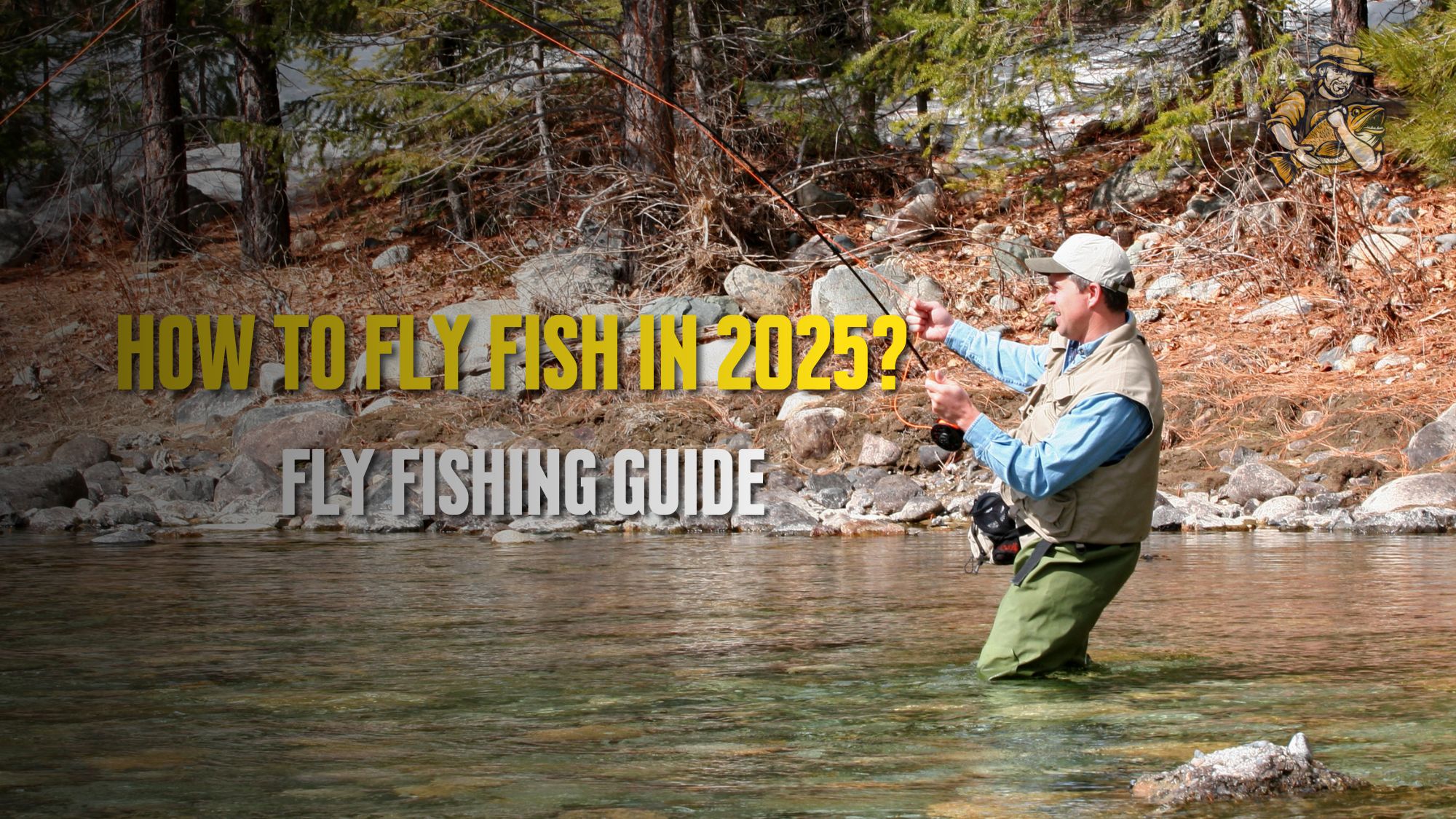
Fly fishing has changed a lot since I first picked up a rod back in the mid-90s. The fundamentals remain pretty similar, but the technology, techniques, and even the community have evolved in ways I never expected. If you’re looking to get into fly fishing in 2025, or maybe you’ve been away from the sport for a while, there’s plenty to catch up on.
I’ve been fly fishing for nearly three decades now, and I’ve seen trends come and go. But the changes we’re seeing nowadays are actually making the sport more accessible and, honestly, more fun for beginners. Let me walk you through what modern fly fishing looks like and how you can get started without all the confusion and frustration that used to be part of the learning curve.
Getting Started with Fly Fishing: The Essentials
When I first started fly fishing, I made so many rookie mistakes that cost me fish, money, and honestly, a lot of enjoyment. I remember buying a high-end rod before I even knew how to cast properly – what a waste! You don’t need to repeat my mistakes.
The beauty of fly fishing in 2025 is that there are now fantastic entry points that weren’t available when I started. Manufacturers have finally figured out that not everyone wants to spend $800 on their first setup.
Selecting Your First Fly Rod and Reel
For beginners in 2025, I strongly suggest a 9-foot, 5-weight rod as your first purchase. This has been standard advice for years, and there’s a good reason – it’s incredibly versatile. You can use it for small trout streams or even bass in smaller lakes.
Modern rod technology has come a long way. Graphite composites have gotten better and cheaper, which means even budget-friendly rods cast pretty well these days. I’m particularly impressed with some of the direct-to-consumer brands that have emerged in the last few years. My buddy Dave picked up a $150 combo from one of these companies last summer, and honestly, it casts almost as well as my $600 setup.
When selecting a rod, consider:
- Length: Stick with 9 feet for your first rod
- Weight: 5-weight is the Swiss Army knife of fly rods
- Action: Medium-fast action is most forgiving for beginners
- Price: Plan to spend between $150-300 for a decent starter combo
Don’t get sucked into the marketing hype about the “latest and greatest” materials. I’ve seen people fishing with 20-year-old rods who catch more than the guys with the expensive new gear. It’s much more about technique than equipment when you’re starting out.
For reels, a simple click-and-pawl reel is fine for beginners. Large arbor reels have become standard now, and they’re worth the slight premium because they retrieve line faster and reduce line memory (when the line keeps that coiled shape). I started with a cheap reel and upgraded later once I understood what features actually mattered to my fishing style.
Understanding Fly Lines and Leaders
This is where I see most beginners get overwhelmed. There are so many types of fly lines now that even I sometimes stand in the fly shop feeling confused. But here’s what you actually need to know:
- For your first line, get a weight-forward floating line (WF5F to match your 5-weight rod)
- Spend money on a GOOD line – this affects casting more than an expensive rod
- Modern lines have improved dramatically with slicker coatings and better tapers
I made the mistake of buying a cheap line when I started, and my casting suffered for months until an older angler at Cooper’s Creek pointed out the problem. I switched to a quality line and suddenly could cast 20 feet further with the same rod.
As for leaders, in 2025 there are some really good knotless tapered leaders available. For your first leader, a 9-foot 4X or 5X tapered leader is perfect for most trout fishing. I usually carry a range from 3X (stronger, thicker) for larger flies and fish, to 6X (thinner, more delicate) for small dry flies in clear water.
One leader should last you multiple fishing trips unless you’re catching your flies in trees constantly (we’ve all been there). I still remember losing three leaders in a single morning on the Au Sable River when I was just starting out. The trees along that river must have enough fishing tackle hanging from them to open a small fly shop!
Essential Fly Selection for 2025
Fly selection can be overwhelming. Walk into any fly shop and you’ll see thousands of patterns. Here’s my practical advice after decades of gradually simplifying my own fly boxes:
Start with just these patterns in sizes 14-18:
- Parachute Adams (the one fly I’d choose if I could only have one)
- Elk Hair Caddis
- Pheasant Tail Nymph
- Woolly Bugger (sizes 8-12)
- Hare’s Ear Nymph
In 2025, there’s been a trend toward more realistic-looking flies with new synthetic materials, but honestly, fish aren’t as picky as fly designers want you to believe. These five patterns will catch fish almost anywhere.
I’ve found that having a few patterns you know how to fish effectively works better than carrying hundreds you don’t understand. Last July, I caught over a dozen nice browns on the Pere Marquette using nothing but a size 16 Parachute Adams despite having a box full of “better” options.
One newer trend worth noting: with water temperatures rising in many trout streams, streamer fishing has become increasingly effective during summer months. Adding a couple of smaller streamers like Clouser Minnows or Sculpzillas to your arsenal isn’t a bad idea.
Modern Fly Fishing Techniques That Work in 2025
The how-to aspects of fly fishing have evolved a lot recently. With more data from competitive anglers and advances in technology, there are some new approaches worth considering.
Euro-nymphing: The Technique That Changed Everything
If there’s one technical development that’s completely transformed fly fishing, it’s European-style nymphing (often called “Euro-nymphing”). This technique has dominated competitive fly fishing and has filtered down to everyday anglers.
The basics of Euro-nymphing involve:
- Longer rods (10-11 feet)
- Little to no fly line outside the rod tip
- Special thin leaders
- Heavy tungsten bead nymphs
- Direct contact with your flies
The advantage is incredible sensitivity and control. You can feel strikes that you’d never detect with traditional methods, and you can keep your flies in the strike zone longer.
I was skeptical about this method for years – it seemed so different from the elegant casting I associated with fly fishing. Then last year at Michigan’s Holy Waters section of the Au Sable, I watched a young angler pull 30+ fish from a run where I’d managed just two using traditional nymphing. I switched methods the next day and had one of the best fishing days of my life.
Is it as aesthetically pleasing as throwing beautiful dry fly loops? Probably not. Does it catch fish when other methods fail? Absolutely.
For those interested in learning more about Euro-nymphing techniques, I’d recommend checking out competitive fly fishing tutorial from the experts who have refined this approach.
Fly Fishing with Technology: Modern Gadgets Worth Having
Technology has crept into nearly every aspect of fishing, and fly fishing is no exception. Some advancements I’ve found genuinely useful:
- Personal Stream Flow Meters: These small devices measure water flow rate, which helps you select the right flies and techniques based on current conditions. After using one at the Baldwin River last fall, I adjusted my nymph weight and immediately started catching fish.
- UV Resin and Lights: For on-stream fly repairs, modern UV resins cure in seconds under a small UV light. I fixed a shredded dry fly on the Pere Marquette last season and kept fishing within minutes.
- Water Temperature Sensors: With climate change affecting our streams, knowing the exact water temperature helps make ethical fishing decisions. When temps hit 67°F on the Boardman River last August, I switched streams rather than stressing the trout further.
Not all tech is necessary though. I still laugh at the guy I saw on the Manistee last summer with a $1,000 fish finder for a small trout stream. Some things just don’t need that level of complexity.
Dry-Dropper Rigs: The Versatile Approach
If you’re new to fly fishing in 2025, learn to fish a dry-dropper rig early on. This involves using a buoyant dry fly with a nymph hung beneath it.
This technique gives you the best of both worlds – you can detect strikes visually when fish take the dry fly, and you’ll catch fish feeding subsurface on the nymph. It’s by far the most versatile approach for beginners.
I’ve done some side-by-side testing at the Pine River with my son Tommy, where I fished a single dry fly while he used a dry-dropper. Over three weekend trips, he outfished me nearly 3:1. Kinda humbling to be schooled by a 9-year-old, but I couldn’t argue with the results.
Starting with a higher-floating dry fly (like a stimulator or hopper pattern) and dropping a small beadhead nymph about 12-18 inches below works in most situations. Modern tippet materials make these rigs much easier to cast than they were just a few years ago.
Where to Fly Fish in 2025: Finding Good Water
One of the biggest changes I’ve noticed in fly fishing over recent years is increased pressure on popular waters. Places that used to be relative secrets are now packed on weekends, thanks to social media and detailed fishing reports online.
Finding Lesser-Known Waters
Instead of hitting the famous “Blue Ribbon” trout streams that everyone knows about, I’ve had much better experiences on smaller tributaries and less glamorous waters.
For example, everyone knows about Michigan’s Au Sable River, but there are dozens of smaller tributaries that fish just as well with a quarter of the pressure. Last May, I took my daughter Emma to a small creek that feeds the main river – we had the whole place to ourselves and caught beautiful native brook trout all morning.
Look for:
- Tributaries of famous rivers
- Streams on public land that require a bit more hiking
- Water that doesn’t make the “top 10” lists online
- Sections upstream or downstream of popular access points
Urban Fly Fishing: The Surprising Alternative
This might sound crazy, but some of my most enjoyable fishing in recent years has been in urban and suburban areas. Many cities have invested in stream restoration projects, resulting in surprisingly good fishing close to home.
Last fall, I caught several nice brown trout in a restored section of the Rouge River that runs literally behind a shopping center near Detroit. Twenty years ago, you wouldn’t have gone near that water, but restoration efforts have transformed it.
The benefits of urban fishing include:
- Less pressure (most fly anglers drive right past these spots)
- Easy access (often with good parking)
- Fish that don’t see as many flies
- Less travel time means more fishing time
Look into local watershed improvement projects in your area – you might be surprised at what’s available. Urban waters often have special regulations, so be sure tocheck local fishing regulations before heading out.
Fly Fishing Etiquette in a More Crowded 2025
With more people taking up fly fishing every year, the streams are getting crowded. Understanding modern etiquette is essential.
Spacing and Courtesy on the Water
The old rule was to stay a full cast length away from other anglers. That’s still a good starting point, but on popular waters, that’s not always possible anymore.
I was fishing the Pere Marquette during the salmon run last year, and at one point, I counted 23 anglers visible from my position. In these situations, communication becomes crucial.
If you need to pass someone, do so at a good distance from the water if possible. If you must wade past, ask which side they prefer you to pass on. A simple “Mind if I pass behind you?” goes a long way.
When I was starting out, I accidentally waded through a pool where an older gentleman was fishing. He said nothing at the time, but later approached me at the parking lot and politely explained proper etiquette. That conversation changed how I behave on the water forever, and I’m grateful he took the time.
Catch and Release Best Practices
Catch and release has become standard practice on most trout waters, but there are right and wrong ways to do it.
Modern research has shown that even brief handling of fish can significantly decrease their survival chances. In 2025, the best anglers are using:
- Rubber or silicone mesh nets (not abrasive nylon)
- Barbless hooks exclusively
- Wet hands before touching fish
- In-water release without lifting fish out when possible
- Quick photos or no photos at all
I used to proudly lift every fish for a photo. Now I release about 90% of my catches without ever taking them out of the water. For the ones I do photograph, I use a technique called “keep ’em wet” where the fish stays partially submerged.
When Tommy caught his first decent brown trout last summer, he was excited to hold it up for a picture. Instead, I showed him how to cradle it in the water and get a great shot without stressing the fish. He still got his memory, and that trout swam away strong.
For more information on modern fish handling techniques that maximize survival rates, there are excellent catch and release guides published by conservation organizations.
The Gear You Actually Need in 2025 (And What You Don’t)
The fly fishing industry is constantly trying to sell you more stuff. After accumulating way too much gear over the years, here’s what I’ve found actually matters.
Essential Gear Worth Investing In
- Quality Waders: Technology has improved drastically here. Modern waders are more durable, more breathable, and more comfortable than ever before. After going through a pair of waders almost every season, I invested in a high-end pair three years ago that still hasn’t leaked.
- A Good Net: A rubber mesh net with a magnetic release is something you’ll use every time you fish. The magnetic releases are game-changers – I can’t count how many times I lost nets before switching to these.
- Polarized Sunglasses: Not just for seeing fish, but for safety too. I’ve had hooks fly back at my face enough times to consider these essential safety equipment.
- A Simple Vest or Pack: You don’t need anything fancy, just something to organize your gear. I actually prefer a simple vest with just a few pockets to the overloaded packs I see some anglers wearing.
- Tippet Holder: This simple device keeps your different tippet spools organized and accessible. One of the best $10 investments I’ve made.
Overrated Gear You Can Skip
- Expensive Fly Boxes: A basic box with good organization works just as well as the fancy ones. I actually use plastic compartment boxes from the hardware store for most of my flies.
- “Limited Edition” Anything: The fish don’t care if your gear is a special color or has a signature on it.
- Super-Expensive First Rod: As a beginner, you won’t have the casting skill to notice the difference between a $200 rod and a $900 rod. Save the high-end purchase for later when you can appreciate it.
- Fishing-Specific Clothing: While dedicated fishing shirts with UPF protection are nice, they’re not necessary. I fished in cotton t-shirts for years before switching to technical fabrics.
- Automatic Reels: They’re heavy, expensive, and the automatic retrieve is rarely useful in real fishing situations. I received one as a gift and almost never use it.
For honest assessments of which fishing gear actually performs well in real-world conditions, there are some great independent gear testing reviews from anglers who aren’t sponsored by the manufacturers.
Common Fly Fishing Mistakes Beginners Make in 2025
Even with all the advances in equipment and instruction, I still see beginners making the same fundamental mistakes I made years ago.
Casting Problems and Solutions
The number one issue I see is trying to cast too much line too soon. Modern fly rods load better than older models, but physics hasn’t changed – you still need to learn to feel the rod load and time your cast.
Start by casting just 15-20 feet of line. Master that before trying to increase your distance. I spent my whole first year fishing within 30 feet, and I caught plenty of fish.
Another common issue is using too much wrist. The fly cast is primarily powered by your forearm moving back and forth, with the wrist relatively stable. Think about driving a nail with a hammer – that’s more the motion you want.
Last summer, I helped a struggling angler at the Boardman River who had watched too many YouTube casting videos and was trying to perform complex movements before mastering the basics. After 20 minutes of simplifying his cast, he was putting the fly where he wanted it consistently.
Not Reading Water Effectively
This is something that takes time to learn, but modern tools can help speed up the process. There are now excellent stream reading apps that use augmented reality to help identify likely holding spots for fish.
The basics remain the same though:
- Fish face upstream in current
- They prefer to expend minimal energy
- They need cover from predators
- They need access to food sources
Look for seams where fast water meets slow water, deeper pools, structures like rocks and logs, and undercut banks. These are all prime trout territory.
When I fish a new stream now, I spend the first 15 minutes just observing before making a cast. This habit has drastically improved my catch rates over the years.
Ignoring Weather and Water Conditions
In 2025, we have access to incredible amounts of data about stream conditions. Use it!
Before heading out, I always check:
- Water levels and flow rates
- Recent temperature trends
- Weather forecast (especially barometric pressure)
- Hatch reports if available
These factors will determine everything from where to fish to what flies to use. When the Baldwin River jumped from 100 CFS to 400 CFS after a big rain last April, I changed my plans completely and fished a smaller tributary instead. I limited out while watching others struggle on the main river.
Learning Resources for Modern Fly Fishers
The way people learn fly fishing has changed dramatically. When I started, you either found a mentor or read books. Now there are so many options.
Beyond YouTube: Better Ways to Learn
While YouTube has plenty of fly fishing content, the quality varies enormously. Instead, I recommend:
- Online Courses: Structured, comprehensive courses from established instructors are worth the money. They provide systematic learning instead of random tips.
- Virtual Reality Training: Some fly shops now offer VR casting simulators that can help you develop muscle memory before hitting the water.
- Stream-Side Apps: These provide real-time guidance based on the conditions you’re facing that day.
- Local Classes: Many fly shops and conservation organizations offer hands-on classes. I’ve been taking my son to these, and even I learn something new almost every time.
- Fishing with Guides: An experienced guide can teach you more in a day than you might learn in a season on your own. Consider it education rather than just a fishing trip.
For beginners looking to accelerate their learning curve, there are excellent interactive casting tutorials available now that provide instant feedback on your technique.
Conservation and Environmental Concerns in 2025
The reality of fly fishing today is that many of our favorite waters are under threat. Climate change, development, and increased pressure are all taking a toll.
How to Fish Responsibly in Changing Waters
Water temperatures in many trout streams now regularly exceed safe fishing temperatures during summer months. When water hits 68°F (20°C), I stop fishing for trout entirely. The stress of catch-and-release at these temperatures can be fatal.
Instead, I’ve started expanding my fly fishing to include warmwater species during hot periods. Smallmouth bass, carp, and panfish are all fun on a fly rod and much more tolerant of warm water.
Last summer during a heatwave, I took Tommy to a local pond for bluegills instead of our planned trout trip. He caught dozens of fish, and we didn’t have to worry about harming vulnerable trout populations.
Many conservation organizations have developed ethical angling guidelines specific to various watersheds that account for local conditions and species.
My Personal Evolution as a Fly Angler
I’ve changed a lot as an angler over the years. When I started, it was all about catching as many fish as possible, and the bigger the better.
Now I find myself enjoying the experience more holistically. Some of my most memorable days on the water recently involved catching fewer but more meaningful fish.
Last fall, I spent a whole day on a small brook trout stream with my daughter Emma. We caught maybe a dozen small brookies between us – fish I would have considered insignificant years ago. But watching her delight in the vibrant colors of these native fish, and taking time to observe the incredible ecosystem around us, made it one of my favorite fishing days ever.
I’ve also developed more appreciation for the history and culture of fly fishing. Reading classic angling literature and tying classic fly patterns connects me to a tradition that spans generations.
Final Thoughts on Modern Fly Fishing
Fly fishing in 2025 is more accessible than ever before. Better equipment at lower prices, more learning resources, and a more welcoming community have removed many of the barriers that used to make this sport intimidating.
At the same time, the fundamentals haven’t changed. It’s still about reading the water, presenting your fly naturally, and connecting with nature in a meaningful way.
If you’re just getting started, don’t be intimidated by the complexity or the instagram-perfect images you see online. Start simple, focus on the basics, and find joy in the learning process.
The best advice I ever received came from an elderly angler I met on the Au Sable years ago. When I asked him the secret to his obvious success, he just smiled and said, “The fish are the best teachers. Watch more, cast less.”
After almost 30 years of fly fishing, I’m still learning something new every time I hit the water. That’s what keeps me coming back, and I hope it will for you too.
FAQ About Modern Fly Fishing
What’s the best time of year to start fly fishing?
Spring and early summer are ideal for beginners. Water levels are typically good, insect activity increases making fish more active, and the weather is comfortable for learning. I started in mid-July years ago and found it challenging because low, warm water made the fish spooky and less active. If you’re just starting out in Michigan, May and June offer prime conditions on most streams.
How much should I expect to spend on my first fly fishing setup?
Plan on $250-400 for a quality beginner setup including rod, reel, line, leader, tippet, and a basic selection of flies. You could spend less, but in my experience, ultra-budget gear ($100 range) often leads to frustration and costs more in the long run when you need to replace it quickly. I’ve found the sweet spot for beginners is around $150-200 for a rod/reel combo, $50-80 for a quality line, and the rest for accessories.
Is fly fishing more difficult than regular fishing?
Yes and no. The casting technique is initially more challenging to learn than spin fishing, but modern equipment has made this easier than ever. The actual catching of fish can be more straightforward with fly fishing in many situations, as flies often present more naturally than conventional lures. When I taught Tommy both methods, he found hook-setting more intuitive with fly fishing because you can feel the connection to the fish more directly.
Can I fly fish in lakes or ponds, or is it just for streams?
Absolutely! While streams get most of the attention, lakes and ponds offer excellent fly fishing opportunities, often with less pressure. Still water requires different techniques – longer leaders, slower retrieves, and more patience. Some of my most productive days have been on small Michigan lakes targeting bass and panfish with poppers. Stillwater fly fishing has been growing in popularity as stream pressure increases.
How do I find places to fly fish near me?
State natural resource departments usually maintain lists of fishable waters with public access. Conservation organizations like Trout Unlimited often have local chapters that can provide guidance. There are also now several fishing access apps that show public entry points and parking areas. Just remember that many of these resources are publicly available, so they tend to show the most well-known spots that receive higher pressure.

Meet Adam Hawthorne
I’m a lifelong fishing enthusiast who’s spent years exploring rivers, lakes, and oceans with a rod in hand. At Fishing Titan, I share hands-on tips, honest gear reviews, and everything I’ve learned about fish and ocean life, so you can fish smarter and enjoy every cast.
Share:

Meet Adam Hawthorne
I’m a lifelong fishing enthusiast who’s spent years exploring rivers, lakes, and oceans with a rod in hand. At Fishing Titan, I share hands-on tips, honest gear reviews, and everything I’ve learned about fish and ocean life, so you can fish smarter and enjoy every cast.
Related Articles
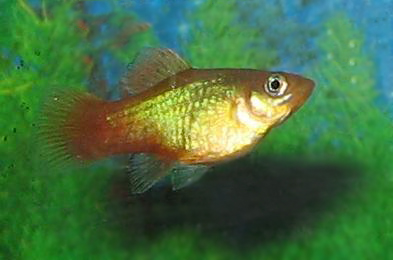
Sunset Platy
The Sunset Platy (Xiphophorus maculatus), commonly known as the Southern Platyfish, represents one of the most popular and recognizable freshwater aquarium species in the hobby…
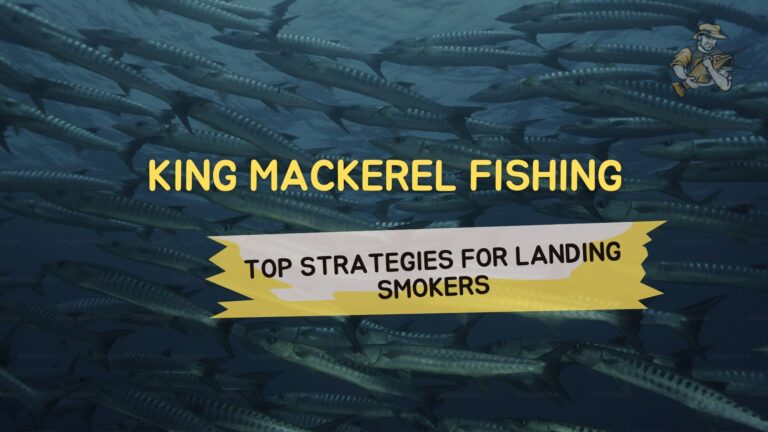
King Mackerel Fishing: Top Strategies for Landing Smokers
Some days on the water just stick with you. Few things compare to that first time a king mackerel nearly spools your reel – that…
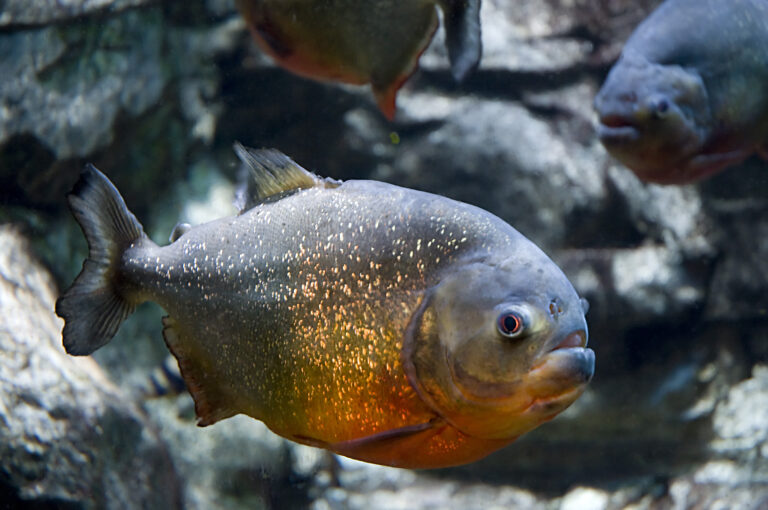
Red Belly Piranha
The Red Belly Piranha (*Pygocentrus nattereri*) stands as one of South America’s most misunderstood freshwater predators, wielding razor-sharp teeth and powerful jaws that have captured…
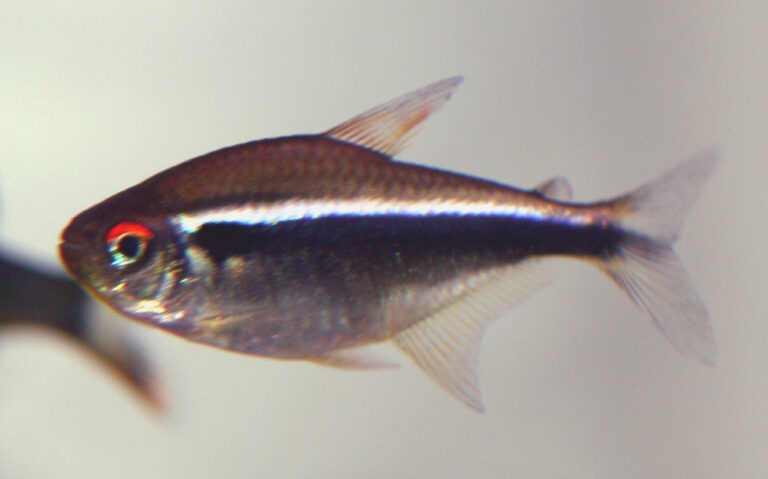
Black Neon Tetra
The Black Neon Tetra (Hyphessobrycon herbertaxelrodi) stands as one of the most distinctive freshwater fish species in the aquarium trade, renowned for its striking black…
Fish Species
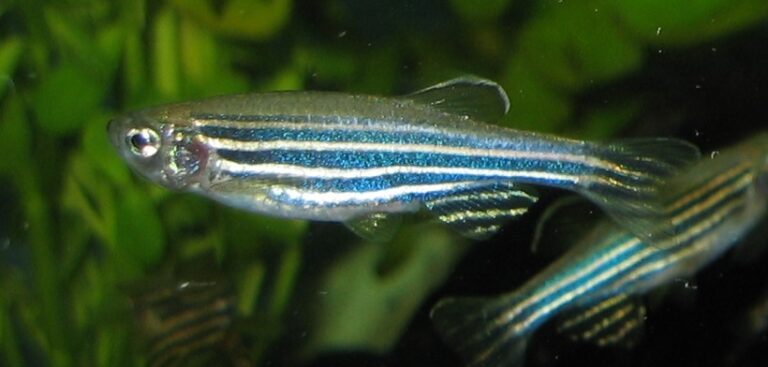
Zebra Danio
The Zebra Danio (Danio rerio) stands as one of freshwater aquarium keeping’s most recognizable and scientifically significant species. This small, hardy cyprinid exhibits distinctive horizontal…
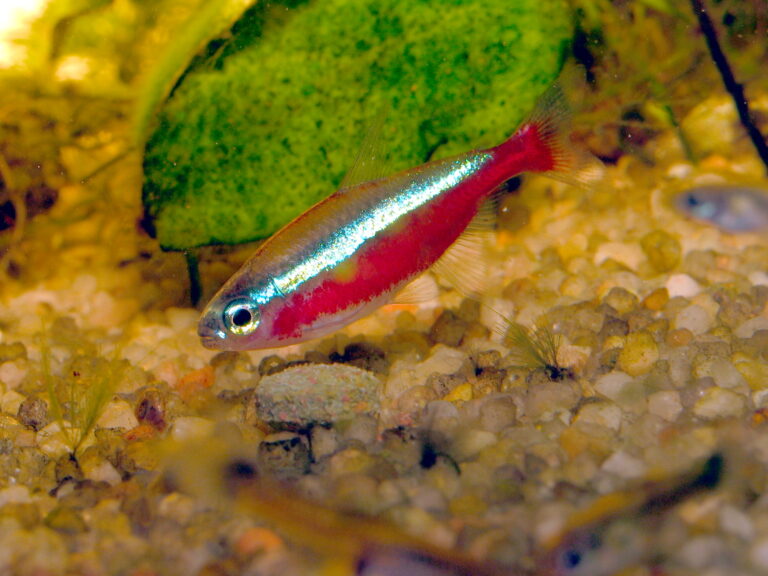
Cardinal Tetra
The Cardinal Tetra (Paracheirodon axelrodi) stands as one of the most vibrant and sought-after freshwater aquarium fish in the world, captivating aquarists and marine biologists…
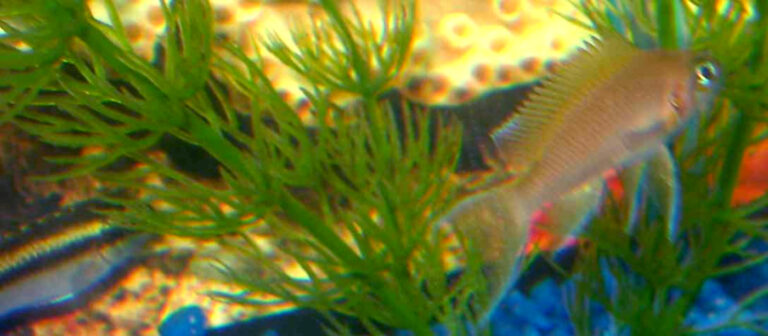
Kribensis Cichlid
The Kribensis Cichlid (Pelvicachromis pulcher) stands as one of West Africa’s most remarkable freshwater fish species, captivating aquarists and researchers alike with its vibrant coloration…
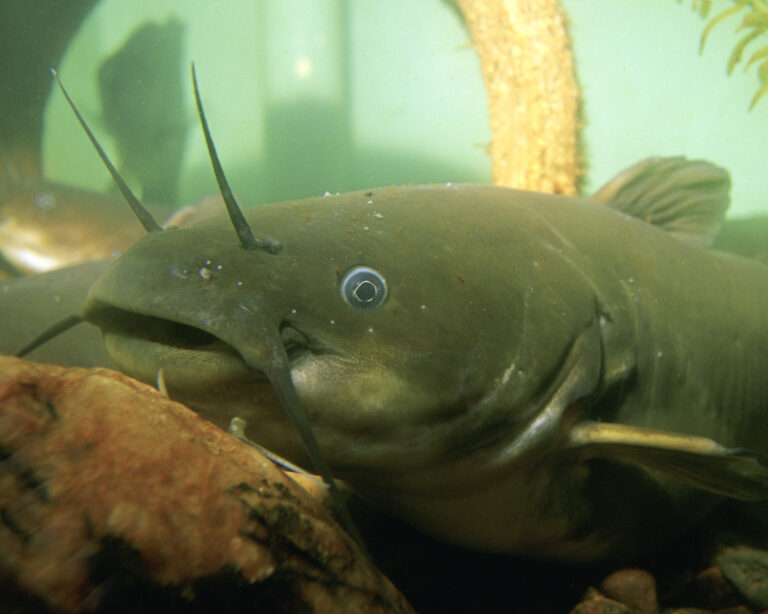
Yellow Bullhead
The Yellow Bullhead (*Ameiurus natalis*) represents one of North America’s most widespread and ecologically significant freshwater catfish species. This robust member of the Ictaluridae family…
